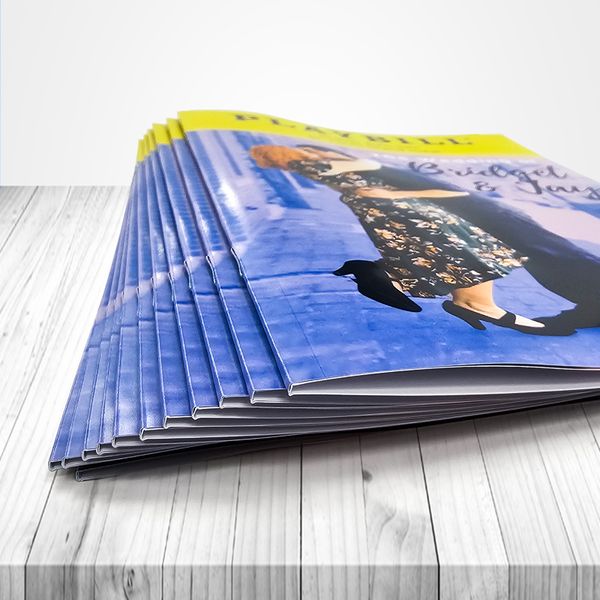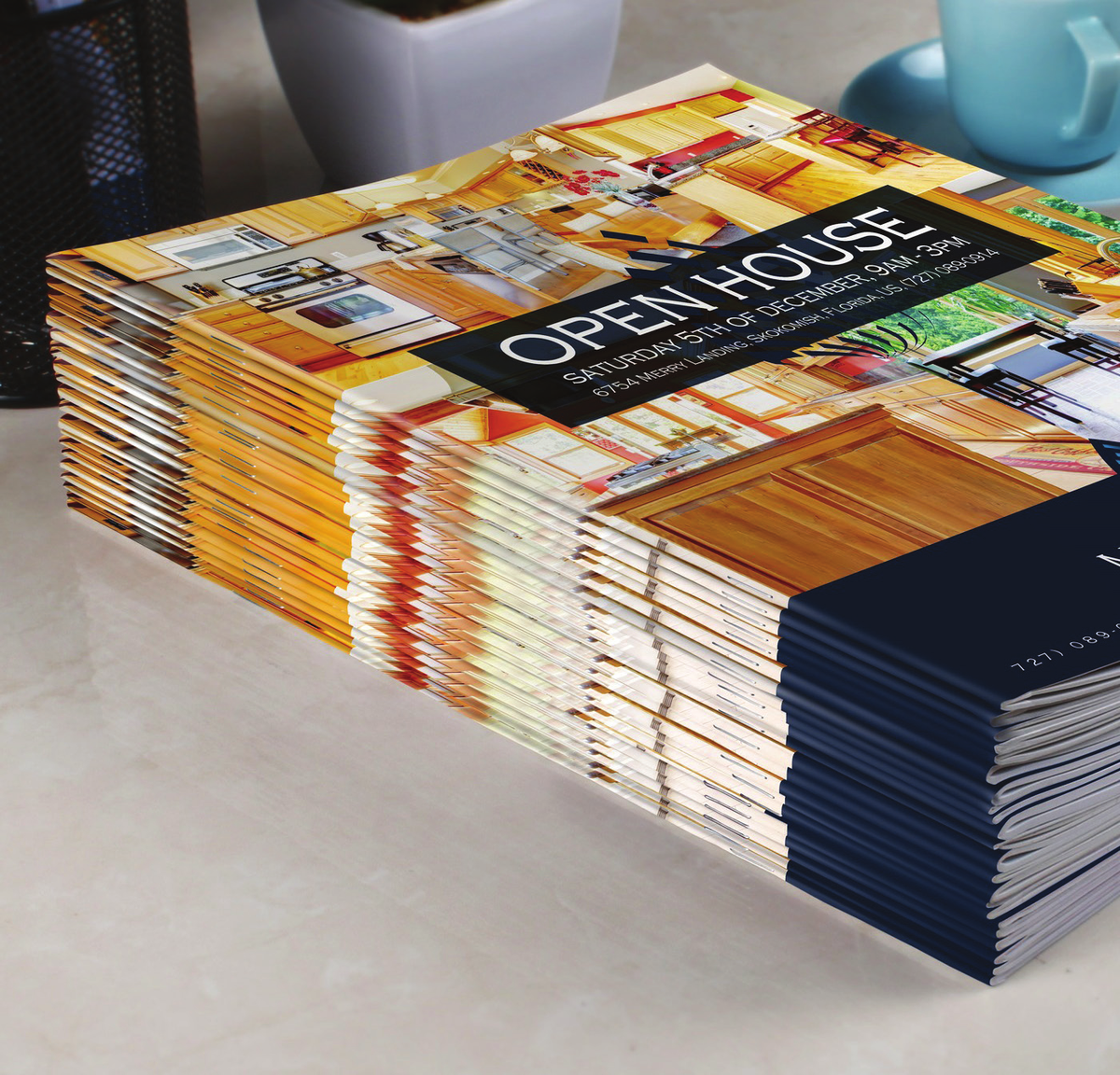7 Must-Know Tips for Affordable Booklet Printing Solutions
7 Must-Know Tips for Affordable Booklet Printing Solutions
Blog Article
The Necessary Overview to Comprehending Brochure Printing Options and Techniques
The process of pamphlet printing entails several considerations that can significantly impact the end product. From choosing the appropriate layout and dimension to comprehending the nuances of binding approaches, each option plays a vital role. In addition, aspects such as paper stock and printing techniques more influence the effectiveness of the brochure. As one navigates these alternatives, it ends up being necessary to comprehend how they adjoin and what that indicates for the overall end result.
Comprehending Pamphlet Styles and Sizes
When taking into consideration pamphlet printing, recognizing the different layouts and sizes readily available is vital for achieving the preferred presentation. Brochures can be generated in various layouts, including saddle-stitched, spiral-bound, and perfect-bound, each offering distinctive advantages. Typical dimensions range from typical letter (8.5 x 11 inches) to smaller choices like A5 (5.8 x 8.3 inches), allowing for versatility based upon content and target audience.Selecting the proper dimension can influence both the design and viewers engagement. Larger dimensions might suit visually driven web content, while smaller sized styles may be a lot more easy to use and mobile. Furthermore, the variety of pages impacts the selection of binding method, as thicker brochures might call for tougher bindings. Ultimately, comprehending these elements permits a more tailored method, making certain that the end product lines up with the designated message and visual, boosting the total performance of the communication.
Selecting the Right Paper Stock

Binding Methods: Choices and Factors To Consider
When it involves binding methods for booklets, a number of alternatives are readily available, each with distinct advantages. Saddle stitch binding supplies a cost-effective service for thinner brochures, while excellent binding techniques offer a more refined try to find thicker publications. Wire-O binding attracts attention for its durability and simplicity of use, making it suitable for records that call for flexibility.
Saddle Stitch Binding
Saddle stitch binding offers a useful and economical remedy for constructing pamphlets, making it a popular choice amongst authors and organizations. This binding approach entails folding sheets of paper in fifty percent and stapling them along the fold line, producing a cool and orderly appearance. Typically ideal for pamphlets with a reduced web page count, saddle stitching is ideal for publications, sales brochures, and educational materials. The simplicity of this technique permits for quick manufacturing and is frequently preferred for marketing items or brief runs. It is necessary to note that saddle stitch binding might not be appropriate for thicker pamphlets, as the back might not hold up under enhanced weight. Overall, it continues to be a trusted choice for many printing tasks.
Perfect Binding Methods
Perfect binding is a widely utilized technique that gives a expert and polished surface to booklets and magazines. This method includes gluing the web pages together at the back utilizing a solid adhesive, allowing for a tidy edge and the capability to hold a bigger number of web pages compared to saddle stitching. Perfect binding is specifically appropriate for thicker pamphlets, such as brochures and yearly reports, where a strong, level spinal column is wanted. Additionally, it uses the alternative for a printed cover that can be created to enhance visual allure. Considerations such as page count, paper weight, and the planned usage of the booklet must be taken into account, as they can influence sturdiness and general high quality.
Wire-O Binding Alternatives
Wire-O binding, recognized for its sturdiness and versatility, supplies an excellent option for brochures that need easy web page turning and a professional appearance. This binding technique utilizes a series of steel loops that hold pages safely, enabling them to lie flat when open. It is especially appropriate for magazines, guidebooks, and discussions as a result of its durable nature. Wire-O binding is readily available in different colors and diameters, accommodating various web page counts and densities. Furthermore, it permits the inclusion of covers and tabs, improving the booklet's overall visual. Factors to consider for Wire-O binding include the selection of cable color, the size of the loopholes, and the degree of customization preferred, all of which can profoundly affect the end product's appearance and capability.
Digital vs. Offset Printing: Which Is Best for You?
When picking a printing technique for booklets, recognizing the distinctions in between electronic and counter printing is necessary. Digital printing uses modern innovation to produce high-grade prints swiftly and affordably, making it optimal for brief runs or jobs requiring fast turnaround times. It permits for personalization, giving the capability to print on-demand with very little waste.In contrast, balance out printing is a typical method that succeeds in producing huge quantities with constant top quality. It entails transferring ink from a plate to a rubber covering, then to the paper, which causes vibrant shades and exact details. Balance out printing typically needs longer arrangement times additional reading and is more affordable for larger volumes.Ultimately, the selection between digital and balance out printing depends on task needs, spending plan, and wanted amount. For small, time-sensitive projects, digital could be the very best selection, while offset may be better for larger, high-grade manufacturings.

Designing Your Pamphlet: Tips and Finest Practices
When creating a brochure, careful attention to layout, typeface option, and color use can greatly boost its performance. A well-structured format guides the reader's eye, while suitable fonts guarantee readability and share the preferred tone. Additionally, reliable use shade can evoke feelings and emphasize essential details, making the overall layout a lot more impactful.
Picking the Right Layout
How can one efficiently choose the right design for a pamphlet? Initially, discover this info here it is important to evaluate the brochure's objective and target audience. A tidy, arranged format improves readability and engagement. Utilizing a grid system can help in aligning aspects consistently, creating a professional appearance. In addition, integrating aesthetic pecking order with differing sizes and positionings of images and message can guide the visitor's eye and stress essential details. It is also essential to leave sufficient white area, which prevents overcrowding and permits for better focus. Ultimately, testing different formats through mock-ups can offer understanding into exactly how the style performs in real-world scenarios, making sure that the last product satisfies both visual and useful demands.
Selecting Suitable Font Styles
An appropriate font style can substantially boost the overall design of a booklet, complementing the layout and strengthening the material's message. The choice of font styles ought to think about readability, particularly for body text, as it ensures the info is easily accessible to all visitors. Sans-serif font styles are typically favored for digital layouts, while serif fonts can lend a traditional feeling in printed materials. It's advisable to restrict font selections to 2 or three to preserve visual comprehensibility. In addition, typeface dimension plays an essential role; headings should be distinct yet not frustrating, while body message ought to fit for analysis. When picking font styles, alignment with the booklet's motif and target audience is vital for effective interaction and aesthetic appeal.
Reliable Use Color
Color offers as a powerful device in brochure design, forming perceptions and assisting viewers emotions. It can stimulate feelings of trust fund, calmness, or exhilaration, relying on the shades chosen. Developers should think about shade theory principles, making certain that the chosen combination straightens with the pamphlet's message and target audience. For example, making use of warm colors like red and orange can produce necessity, while cooler tones like green and blue foster tranquility.Additionally, contrast plays a crucial duty; complementary colors can improve readability and aesthetic allure. Consistency in color usage across pages better enhances brand name identification and communication. Inevitably, reliable shade execution not just records focus yet additionally enhances the pamphlet's objective, making it an essential aspect of successful design.
Ending Up Touches: Coatings and Unique Effects
While lots of consider the material and format of a booklet the most important components, the finishing touches, such as finishes and unique effects, play a vital duty in enhancing its general charm. Coatings can offer protection and durability, ensuring that the pamphlet stands up to deterioration. Matte finishes offer an innovative, non-reflective surface area, while glossy coverings can make shades show up more vivid and distinctive. Special results, like embossing or aluminum foil marking, add a responsive dimension that can create an unforgettable impression. These strategies can highlight certain locations, attracting attention to vital info or creating aesthetic interest. In addition, UV finishing can provide a high-shine surface that elevates the total look.Together, these finishing touches not just enhance the pamphlet's aesthetic however also interact professionalism and reliability and focus to detail, inevitably leaving a long lasting influence on the reader.
Price Considerations for Brochure Printing
Recognizing the various price considerations for brochure printing is essential for companies and companies intending to optimize their budget plans. Trick elements affecting prices include the option of ink, paper, and binding approaches. Higher high quality products, such as exceptional paper or specialized inks, typically enhance the overall expenditure. Additionally, the size and page matter of the pamphlet play a substantial internet role; larger brochures need even more sources and time to produce.Another vital factor to consider is the printing technique, whether digital or offset, as each has its own pricing structure and suitability for different quantities. Services must additionally consider layout prices, which can differ based upon intricacy and the usage of specialist solutions. Inevitably, delivery and handling costs can include to the total amount, specifically for huge orders. By examining these components, companies can make educated decisions that line up with their monetary capabilities while achieving the desired quality in their published products.
Often Asked Concerns
What Are the Environmental Impacts of Booklet Printing?
The ecological influences of brochure printing include deforestation from paper manufacturing, carbon exhausts from transport, and waste generation from disposed of materials - Booklet Printing. Lasting techniques, such as utilizing recycled paper and environment-friendly inks, can reduce these effects
Just How Can I Make Certain Color Accuracy in My Pamphlet?
To ensure color precision in a brochure, one ought to utilize adjusted screens, employ specialist color accounts, carry out test prints, and pick top notch printing services that offer shade matching and proofing alternatives for finest results.
What Is the Typical Turn-around Time for Pamphlet Printing?
The regular turnaround time for booklet printing varies depending on the intricacy and amount - Booklet Printing. Normally, it ranges from a couple of days to two weeks, affected by elements such as publishing methods and finishing needs
Are There Minimum Order Quantities for Pamphlet Printing?

Can I Print Pamphlets in Numerous Languages?
Printing booklets in several languages is feasible. Lots of printing solutions offer options for multilingual or bilingual designs, enabling reliable interaction. Mindful planning guarantees that develop aspects fit different languages without jeopardizing readability or aesthetics. Additionally, factors such as paper stock and printing techniques further influence the effectiveness of the booklet. When thinking about booklet printing, comprehending the various formats and sizes available is important for achieving the desired presentation. When picking a printing approach for pamphlets, recognizing the distinctions between digital and offset printing is essential. In addition, the dimension and web page count of the booklet play a significant duty; bigger brochures require even more sources and time to produce.Another crucial consideration is the printing technique, whether electronic or balanced out, as each has its own pricing framework and viability for different amounts. The ecological effects of booklet printing consist of deforestation from paper production, carbon exhausts from transportation, and waste generation from discarded products.
Report this page